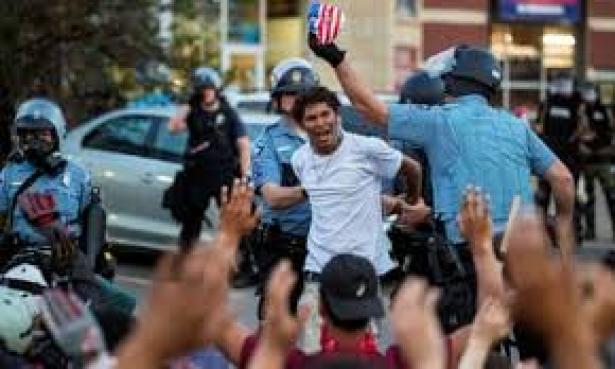Minneapolis, where George Floyd was killed by a police officer who kneeled on his neck for over eight minutes, has tried reform already. Five years ago, the Minneapolis police department was under intense pressure in the wake of both the national crisis of police killings of unarmed black men and its own local history of unnecessary police violence. In response, the department’s leaders undertook a series of reforms proposed by the Obama administration’s justice department and procedural reform advocates in academia.
In 2015, they brought in procedural reformer and implicit bias champion Phillip Atiba Goff to lead the National Initiative for Building Community Trust and Justice, a three-year, $4.75m project to use data collection, social psychology and police community dialogues to repair and strengthen the frayed relationship between cops and communities.
Following that, Minneapolis implemented a series of training programs designed to professionalize policing in the hopes that it would reduce abuses that might trigger more protests. Officers were trained in how to respond to mental health crisis calls, how to de-escalate confrontations with the public, how to be “mindful” in dangerous circumstances, and how to be more self-aware of their implicit racial bias. In 2018, the department even wrote a report, Focusing on Procedural Justice Internally and Externally, to highlight the broad range of procedural reforms they had implemented.
None of it worked.
That’s because “procedural justice” has nothing to say about the mission or function of policing. It assumes that the police are neutrally enforcing a set of laws that are automatically beneficial to everyone. Instead of questioning the validity of using police to wage an inherently racist war on drugs, advocates of “procedural justice” politely suggest that police get anti-bias training, which they will happily deliver for no small fee.
What “procedural justice” leaves out of the conversation are questions of substantive justice. What is the actual impact of policing on those policed and what could we do differently? Over the last 40 years we have seen a massive expansion of the scope and intensity of policing. Every social problem in poor and non-white communities has been turned over to the police to manage. The schools don’t work; let’s create school policing. Mental health services are decimated; let’s send police. Overdoses are epidemic; let’s criminalize people who share drugs. Young people are caught in a cycle of violence and despair; let’s call them superpredators and put them in prison for life.
Police have also become more militarized. The Federal 1033 program, the Department of Justice’s “Cops Office,” and homeland security grants have channeled billions of dollars in military hardware into American police departments to advance their “war on crime” mentality. A whole generation of police officers have been given “warrior” training that teaches them to see every encounter with the public as potentially their last, leading to a hostile attitude towards those policed and the unnecessary killing of people falsely considered a threat, such as the 12-year-old Tamir Rice, killed for holding a toy gun in an Ohio park.
The alternative is not more money for police training programs, hardware or oversight. It is to dramatically shrink their function. We must demand that local politicians develop non-police solutions to the problems poor people face. We must invest in housing, employment and healthcare in ways that directly target the problems of public safety. Instead of criminalizing homelessness, we need publicly financed supportive housing; instead of gang units, we need community-based anti-violence programs, trauma services and jobs for young people; instead of school police we need more counselors, after-school programs, and restorative justice programs.
A growing number of local activists in Minneapolis like Reclaim the Block, Black Visions Collective and MPD 150 are demanding just that. They are calling on Mayor Jacob Frey to defund the police by $45m and shift those resources into “community-led health and safety strategies.” The Minneapolis police department currently uses up to 30% of the entire city budget. Instead of giving them more money for pointless training programs, let’s divert that money into building up communities and individuals so we don’t “need” violent and abusive policing.
-
Alex S Vitale is professor of sociology and coordinator of the Policing and Social Justice Project at Brooklyn College and the author of The End of Policing


Spread the word